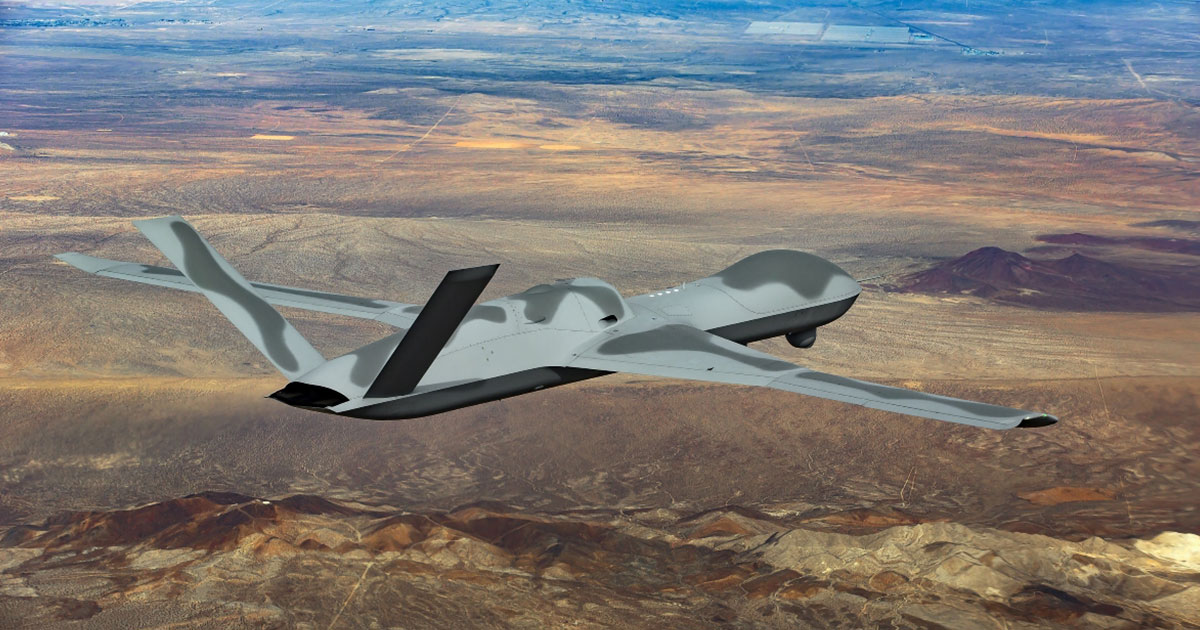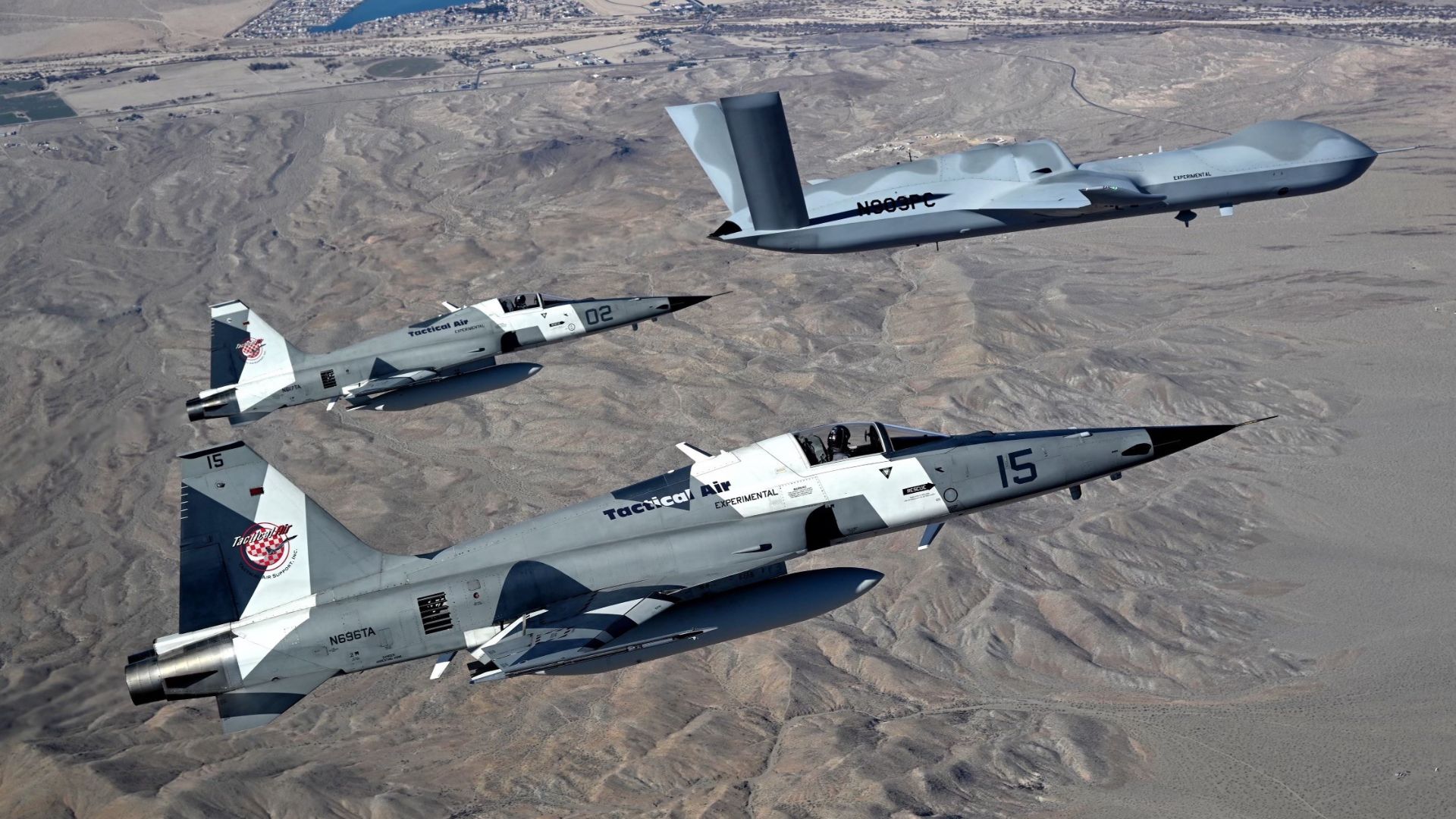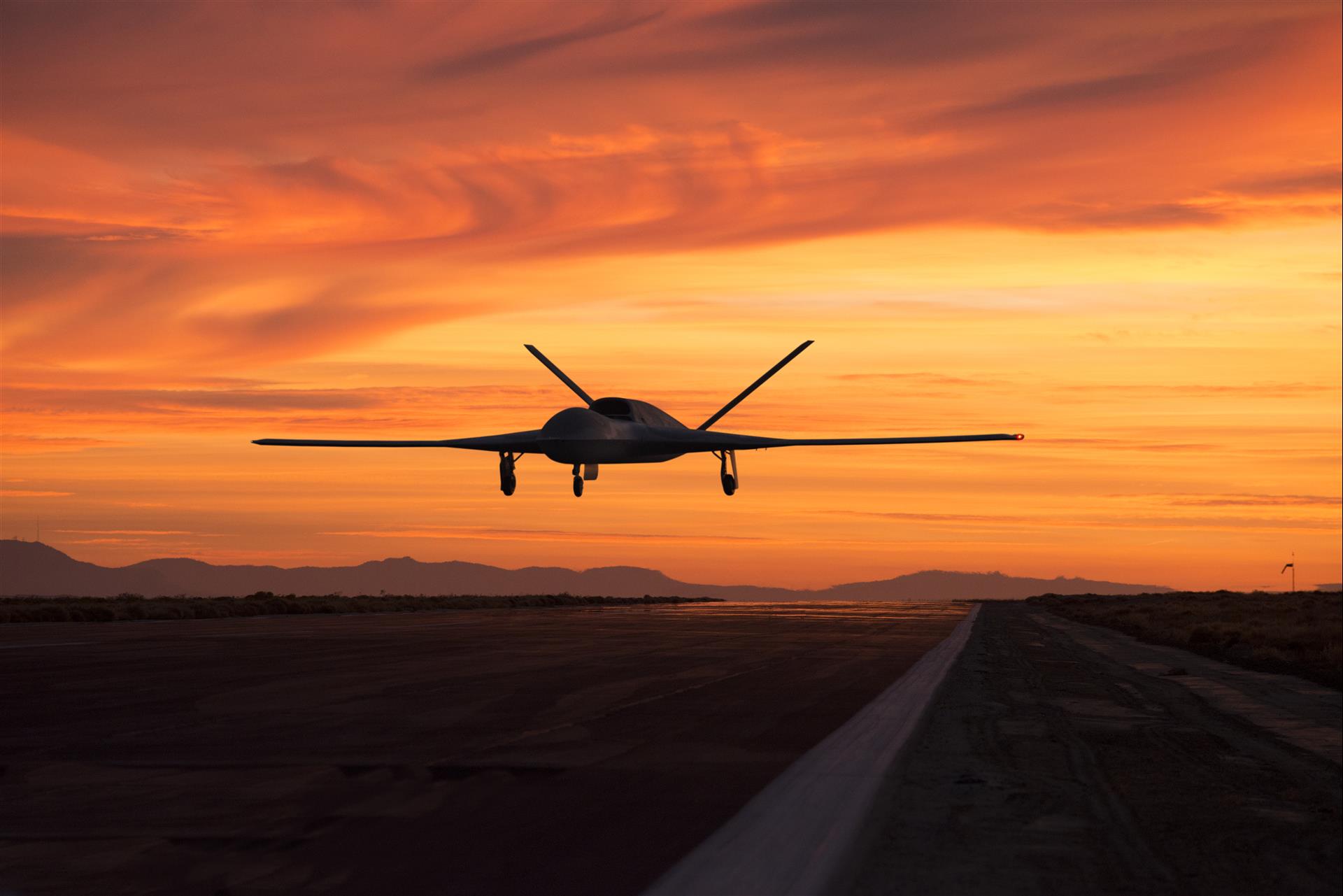GA-ASI’s Avenger Leads the Way in Autonomy and AI
There’s been a lot of talk about building a new generation of autonomous systems to help the U.S. and its allies preserve their advantage in airpower. General Atomics Aeronautical Systems is leading the way.
To understand how, consider the scale and nature of the challenge: Tomorrow’s Air Force needs large numbers of versatile, highly capable aircraft to scout ahead, share what they sense, take on tasks and act largely on their own.
Obviously, this requires advanced new aircraft, but that’s not all. It also requires new sensing and communications systems, networks to knit them all together, software to control everything and interfaces that make it simple for the human personnel overseeing it all.
Fielding one aspect of it would be difficult. Fielding the whole ecosystem will be one of the greatest challenges in the history of aviation – a task too big for any single entity or company. Fortunately, a great deal of headway already has been made by GA-ASI and its partners. GA-ASI’s Gambit series of systems is the most complete vision in the aerospace world today of a new suite of unmanned combat aircraft, and it represents an ideal end state program for the Air Force and its allies.
To get there, GA-ASI’s MQ-20 Avenger aircraft are climbing the ladder toward broader and more complete networked autonomy. A series of experiments and test events, many of them thanks to company investments, have yielded a status report that shows GA’s progress on advanced, networked autonomy is second to none.
That makes sense – as the world leader in unmanned aircraft, with more than 8 million flight hours logged, GA-ASI is positioned better than anyone to make the next advances into a new era of aircraft operations.

The autonomy advantage
First consider, for a moment, exactly what’s different and why: traditionally, when an MQ-9A Reaper took off and then climbed out to conduct its mission, it was being operated by a human crew nearly all the time. The pilots and other crew members had their hands on pilot-like controls at a ground station and they were flying the aircraft like a traditional one.
Those aircraft will continue to serve valuable roles for a long time, but fully autonomous systems are different. Although humans stay in command, the aircraft don’t use human controllers in the same way. Instead, operators tell an aircraft to fly to a certain place, conduct certain types of operations, and off it goes by itself, with no need for live inputs from a pilot.
What the aircraft does need is software that can operate its engines, flight control surfaces, landing gear and other onboard systems to keep airborne. It needs software for its mission systems, such as surveillance equipment or advanced sensors. And it needs to be able to talk with other friendly aircraft to share what it’s seeing, hearing and doing – and what they’re seeing, hearing and doing.
The aircraft can’t depend on an always-on satellite datalink to do all this. What if an enemy tried to degrade it? Instead, the right approach is to put much of the decision-making in the hands of the aircraft itself: It will fly itself to a patrol area, look for objects of interest and if it detects one, take the right action. Maybe that is to do nothing. Maybe it’s to report what it saw. Maybe it’s to take another prearranged action, such as flying to a different location.
When the autonomous aircraft chooses when to transmit, it’s much more resilient against enemy disruption. It means that mostly, the aircraft are radio silent.
Plus with advanced aircraft like those developed by GA-ASI, the airplane may transmit peer-to-peer, to a wingman, as opposed to over an open radio net, which could be overheard, or up and down via a satellite, connections an enemy might try to degrade. The autonomous aircraft in question might use a laser to transmit information back and forth – as GA-ASI has demonstrated -- a technique that yields high data delivery while being virtually impossible for an adversary to sense or disrupt.
Autonomy, in other words, isn’t only about helping human pilots keep back from danger by giving combat assignments to unmanned aircraft. It’s also about entirely new practices of attaining and maintaining air superiority, ones that wouldn’t otherwise be possible. Large numbers of autonomous systems, working together among themselves but also in support of the other aircraft, are what make these whole new types of warfare possible.

Big wing, networked sensing
Imagine that the U.S. Air Force had to defend friendly territory against the possible incursion of an adversary that was deploying advanced, low-observable fighters. These threat aircraft are designed to evade conventional radar detection, and besides, when allied aircraft turn on their radars, they reveal their own locations.
But what if the Air Force could array a screen of autonomous aircraft to patrol the area for long periods of time? These aircraft, with high built-in endurance and no humans on board, could remain on station for much longer than conventional aircraft. And they could look out into the airspace with passive sensors, waiting to detect the heat or radio frequency emissions or other telltale signatures of potential aggressors, all while keeping their own signatures controlled.
The long endurance means there’s never a gap in the presence of patrol aircraft for the enemy to try to exploit. And the larger numbers of unmanned aircraft in the mission mean they can each take a separate look at any potential threat, from different angles, at different ranges, comparing what they detect and confirming the presence of a potential hostile aircraft – even a stealthy one.

Many milestones
It sounds like science fiction but the groundwork already is well laid, thanks to GA-ASI and its partners.
In late 2022, for example, an Avenger unmanned aircraft worked in concert with three human-piloted aircraft in a demonstration of this multi-platform passive sensing. In this case, the aircraft detected relevant airborne targets in the infrared spectrum and communicated with each other to share their observations from next-generation search-and-track sensors.
This was a real mission involving a flight of four physical airplanes – but it also involved five “digital twins” of the Avenger, created in software, that flew a live, virtual, constructive collaborative combat mission. Software modeling of this kind lets GA-ASI increase the scope and lessons learned from these demonstrations by proving how far up the operations can scale. So for the purposes of the simulated mission, this was fully a nine-ship operation, validating that larger numbers of aircraft can handle these kinds of tasks.
Several other flights have pushed the boundaries of what artificially intelligent pilots can handle aboard Avenger and its digital twins. They’ve also validated that these aircraft can respond to tasking or mission events in real time and interface with human fighter pilots via a touchscreen tablet interface.
There’s still a way to travel before the U.S. Air Force and its high-tech allies realize the vision for large-scale, integrated, autonomous unmanned combat aerial vehicles, or UCAVs, but GA-ASI and its partners are at the front of the line in working to get there.
“The concepts demonstrated by these flights set the standard for operationally relevant mission systems capabilities on UCAV platforms,” says Michael Atwood, GA-ASI’s vice president of advanced programs. “The combination of airborne high-performance computing, sensor fusion, human-machine teaming and AI pilots making decisions at the speed of relevance shows how quickly GA-ASI’s capabilities are maturing as we move to operationalize autonomy for UCAVs.”